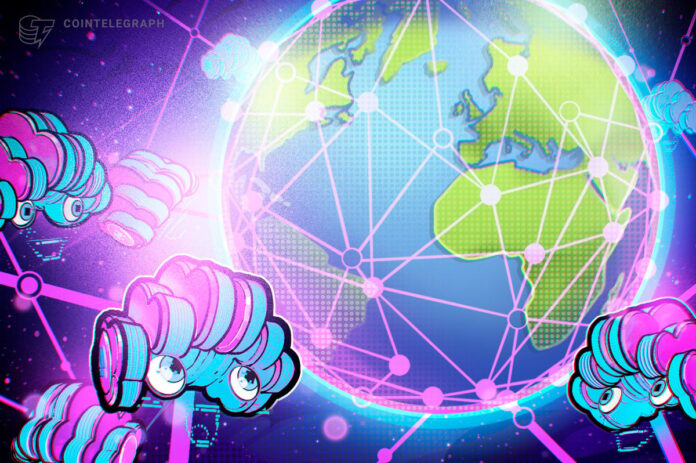Cointelegraph by Gaurav Sharma
Opinion by: Gaurav Sharma, CEO of io.net
Artificial intelligence may be in its early days, but it has already delivered significant scientific and technological breakthroughs across the developed world. Unfortunately, these developments have come at a cost: the dangerous centralization of AI.
On Forbes’ 2025 list of the top 50 private AI companies, all are based in the developed world, with 80% in the US.
AI remains skewed toward well-capitalized tech giants in the developed world.
For many in emerging economies, the price of entry to the AI revolution is unreachable. We need to ensure innovation and AI development are accessible to the broadest range of projects.
The imbalance in AI access
At the heart of the problem lies access to compute. Training and deploying large AI models requires vast GPU power. Supply has not kept pace, driving the price for Nvidia’s H100 chips up to more than $30,000.
An ambitious AI research company might spend 80% or more of its funding on compute — resources that could otherwise go to R&D or talent. Well-funded tech giants may raise billions to secure them. The rest of the world cannot.
The consequences are far-reaching. AI-driven innovation risks becoming a monopoly technology, controlled by a handful of corporations and nations. Promising applications of AI in agriculture, education or healthcare in the developing economies may never materialize — not because of a lack of talent, but because of limited access to compute.
Geopolitically, the undersupply of compute is beginning to mirror oil or silicon. Nations without sovereign access to compute will be forced to import it, creating dependencies on countries that may not align with their national objectives and exposing importers to foreign energy and real estate markets. These dependencies threaten economic competitiveness and national security.
The dangers of centralizing AI influence
If access to compute remains concentrated in developed countries, so too will influence.
Frontier AI technology, from LLMs to diffusion models, will be shaped by the same perspectives, narrowing diversity and embedding systemic risks. Developing nations risk being locked out from contributing to or benefiting from the technology defining the global economy.
Centralization ensures disproportionate returns flow to those with privileged access, leaving behind smaller players, often those building locally relevant tools. Over time, barriers to competing in the AI market could become a destabilising oligopoly, freezing the developing world out of a key industrial shift. Concentrated infrastructure control has always produced distortions, and AI will be no different.
Balancing the scales with decentralized compute
The solution to the challenges of accessibility and centralization is surprisingly simple: compute marketplaces powered by blockchain. Like Uber unlocked idle cars and Airbnb unlocked spare rooms, decentralized compute marketplaces unlock underutilized hardware. The result is lower prices and a more diverse and resilient ecosystem of suppliers and consumers.
Related: Bitcoin network used to secure local GOP convention election results
Across the globe, millions of GPUs sit idle in data centers, enterprises, universities and homes. By pooling these GPUs in on-demand clusters through a blockchain, underutilized hardware is made available at a fraction of centralized compute costs. Startups in lower-income countries can afford to scale AI workloads, no longer shut out by industry leaders’ capital advantage.
Blockchain’s critical role
Without blockchain, this model would not be possible. Tokens are the coordination and trust layer, aligning incentives across decentralized physical infrastructure networks (DePINs). Leading DePINs require compute suppliers to stake tokens to incentivize reliability, with penalties for downtime. Developers pay in tokens, enabling seamless settlement across borders.
For hardware providers, tokenized rewards create fairer economics: compensating compute owners based on usage, providing previously unavailable revenue without sacrificing their core purpose. For developers, access to cheaper compute incentivizes participation and innovation in AI. This creates a virtuous feedback loop — as more participants join the market for decentralized compute, compute becomes more affordable and abundant.
Addressing the challenges
Some critics have argued that decentralized compute isn’t as performant as hyperscalers, citing latency and quality concerns. The reality is quite different. DePINs deliver competitive performance across latency, concurrency and throughput. Techniques like smart workload routing, mesh networking and tokenized incentives for high availability help maintain performance and optimize it dynamically based on workload needs.
Additionally, certain DePINs have built transparent network explorers, enabling developers and investors to verify performance claims in real time. These mechanisms help make DePINs even more reliable and cost-effective than traditional providers.
DePINs are also more diverse than hyperscaler offerings. Over 13 million devices are online today, allowing developers to tap a broad spectrum of hardware and find the right tool for their AI projects, from high-performance cloud-grade GPUs to specialized edge devices.
A level playing field for AI
We have a narrow window to define the technological landscape for future generations. Many US and Chinese corporations may have taken the lead, but decentralized compute marketplaces offer a promising alternative. By lowering costs and widening access, startups, scaleups, researchers and enterprises globally can compete more equally. Emerging economies can build models for their own languages, healthcare systems, cultural beliefs and financial needs.
The question is not whether decentralization is necessary, but how to get developers worldwide onboarded to this opportunity, while simultaneously increasing the number of companies that list their excess compute on DePINs. Only by decentralizing compute can AI become truly accessible and serve as many people as possible, rather than just the entrenched oligopolies.
Opinion by: Gaurav Sharma, CEO of io.net.
This article is for general information purposes and is not intended to be and should not be taken as legal or investment advice. The views, thoughts, and opinions expressed here are the author’s alone and do not necessarily reflect or represent the views and opinions of Cointelegraph.
